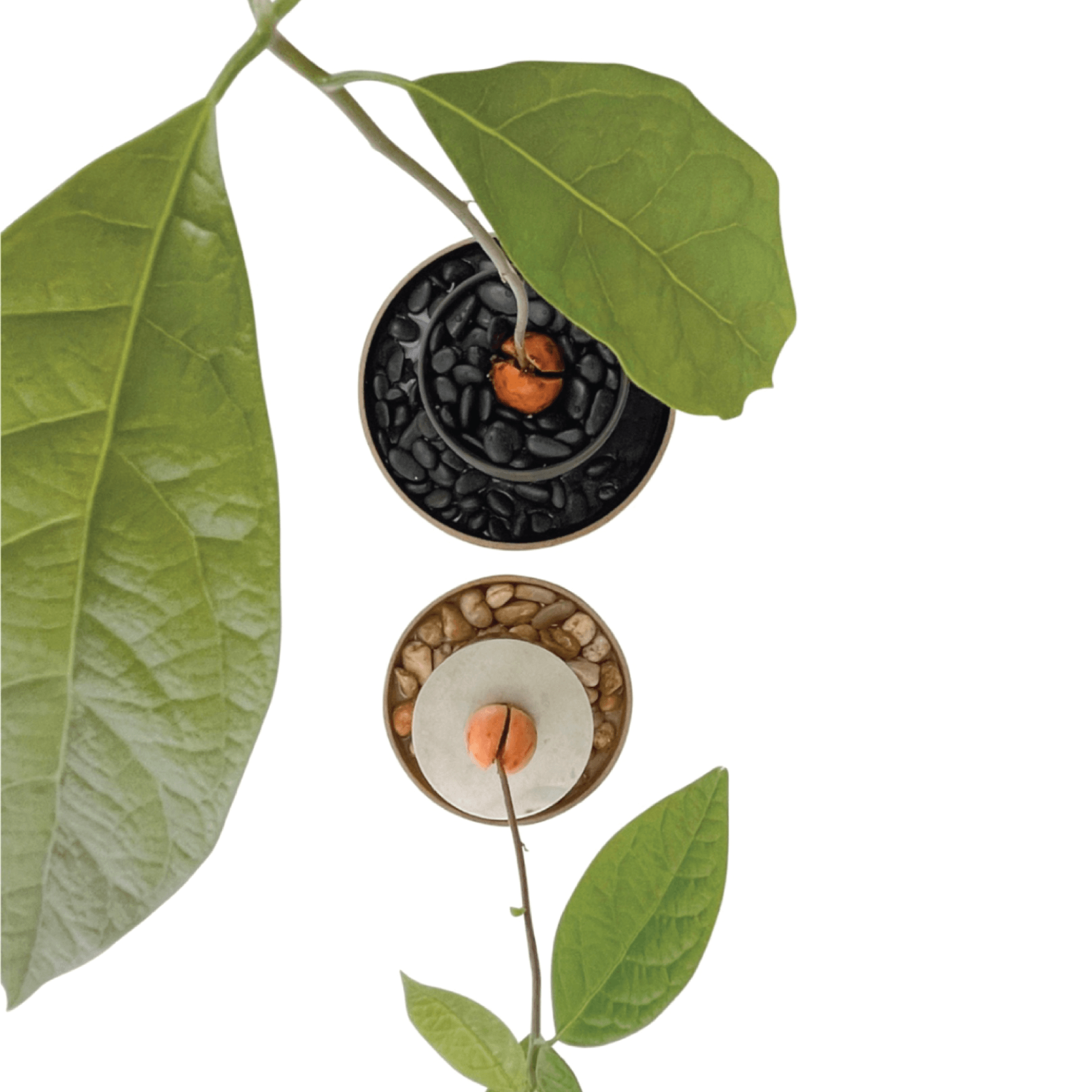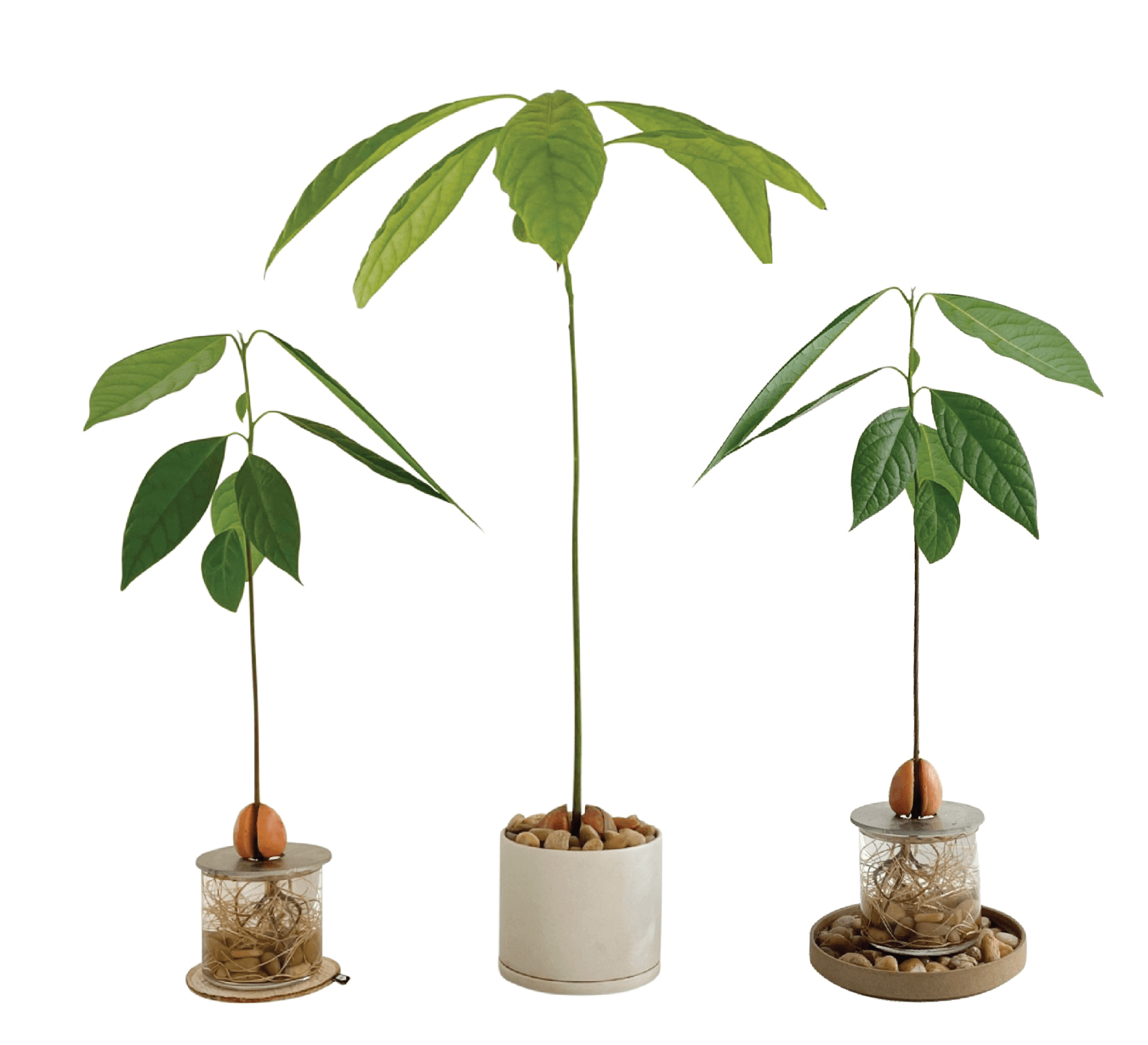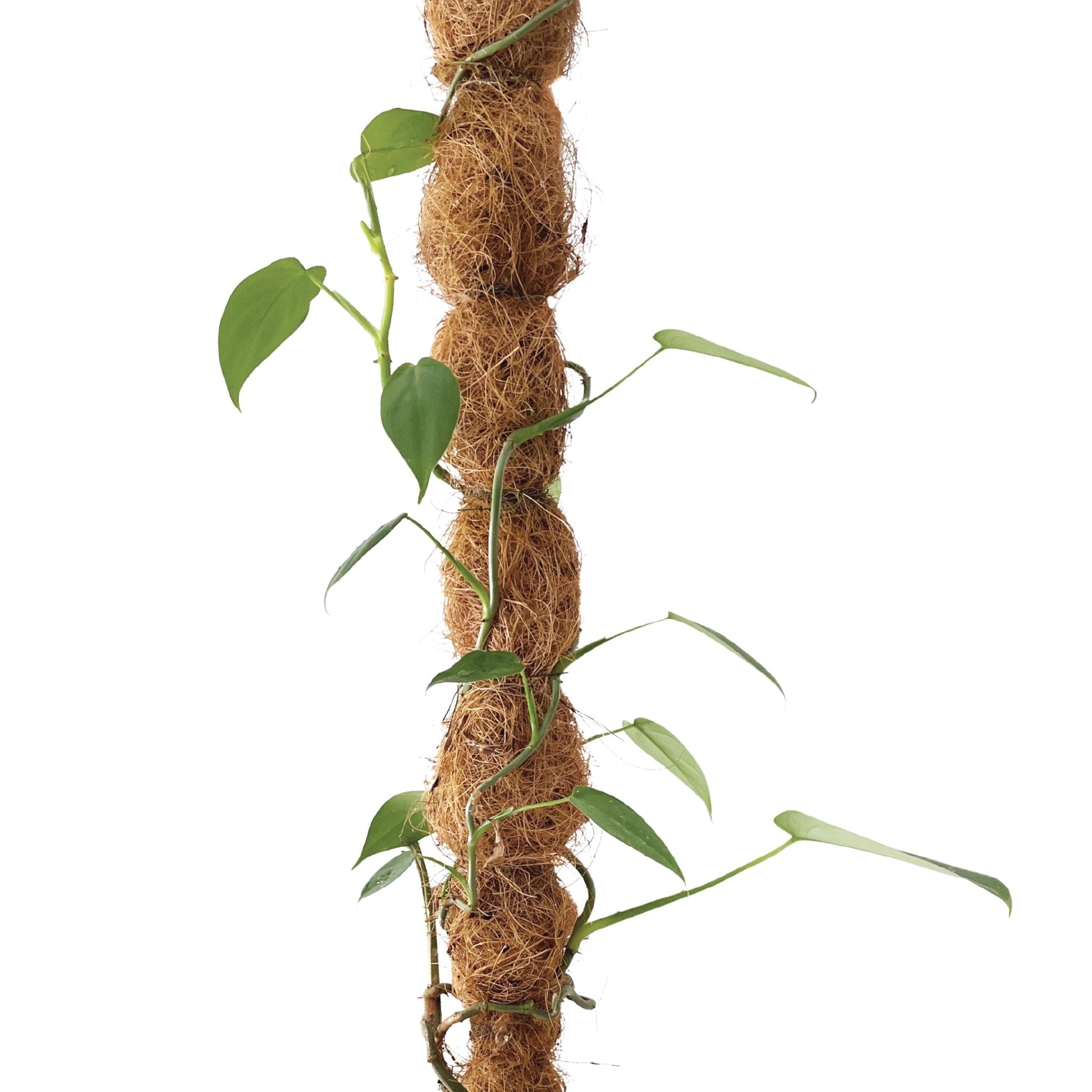BOTTOM WATER WITH A HUMIDITY TRAY

HOW TO BOTTOM WATER YOUR PLANTS A LA HUMIDITY TRAY
Bottom watering is a method of watering your plants from the bottom up. When you place your plant into a container of water, the water is pulled up through the bottom drainage hole by the plant. This technique is used as an alternative to watering from the top.
This is a step by step guide on bottom watering your houseplants using a humidity tray + the benefits.

Time
Prep Time: 5-10 min
Materials
- ROCKS / PEBBLES / GRAVEL - We are using our Polished PEBBLES in Natural and Grey
- PLANT OF CHOICE - We are using our Avocado Seedling.
- PLANT POT (with drainage hole!) - We are using our 4" PLANT POT in Earth Grey
- POTTING SOIL - We are using our POTTING MIX to pot the Plant
- TRAY/BOWL - We are using our 5 5/8" PORCELAIN TRAY
- WATER - to rinse Pebbles + add to Humidity Tray. We are using room temperature tap water
- STRAINER - to rinse the silt from your rocks / pebbles / gravel
- WATERING CAN (optional) - to water your humidity tray

Instructions
1. Select your PLANT OF CHOICE and check the Pot size. We are using our Avocado Seedling planted in a 4" diameter PLANT POT. To bottom water, your plant pot MUST have a drainage hole.
2. Select your TRAY/BOWL to bottom water - size should be wider in diameter than your selected Plant Pot.
PLEASE do not use a TERRACOTTA TRAY as it will absorb the water and leak. It is best to use a non-porous tray material such as Metal (that will not rust), Glass or a Glazed Ceramic/Porcelain.
3. Add clean PEBBLES in a thin layer covering the bottom of your TRAY - spread out evenly.

***More detailed humidity tray instructions and tips can be found HOW TO MAKE HUMIDTY TRAY
4. Add your PLANT centered onto your HUMIDITY TRAY. Do not include your PLANT POT saucer if it has one.
5. Check the current moisture of your Plant Soil either with a moisture meter or just your finger or a chopstick works too! If Soil is dry a few inches below the top soil, proceed with BOTTOM WATERING.
6. Add WATER to your HUMIDITY TRAY so that the water level is ABOVE the top of the rocks and reaching the bottom of your PLANT POT.

7. Let PLANT sit for about 10 minutes. Check the Soil moisture again. It should be moist just below the top of your Soil.
8. If the SOIL is still dry, repeat soaking process. But do NOT let it soak too long or this can cause your plant to soak up too much water and lead to root rot.
9. Once PLANT has received enough water. Just make sure your Humidity Tray water level is BELOW the top of the rocks. This ensures the drainage hole is not absorbing water and that it is now only acting as a humidity tray (adding moisture to the air around your plant).
9. If you are using a BOWL to bottom water - you can return your plant to its Saucer.
BENEFITS:
- REHYDRATES - works well for very dehydrated plants
- ROOT DIRECTION - helps plant roots grow down towards the water source
- MORE CONSISTENT WATERING - soil and and plant roots receive water more evenly
- REDUCES RISK OF OVER OR UNDER WATERING - plants control how much water they need to absorb compared to top watering
- PREVENTS EXCESS WATER ON PLANT FOLIAGE - helpful for plants that are sensitive to water on their leaves (i.e. Violets or Date Palms)
- CAN REDUCE PESTS - if you are ensuring the Soil is just staying moist below the top soil line you are preventing a breeding ground for fungus gnats
- LESS MESSY - typically when you top water you have a high chance of water overflowing when the water goes through the drainage hole. Bottom watering should never overflow.
- INCREASES HUMIDITY - if you use a humidity tray it will create a humid micro-climate for your plants. Increases humidity levels slightly around plant placed on top of humidity tray
- NOTE: if you need to significantly increase the humidity % in your room - please use a Humidifier
- BONUS: method works well for seedlings!
FURTHER STEPS
If you continue to bottom water your plants, periodically top water them to flush out any salt and mineral build up, once a month or so. Salt and mineral build up is a problem you need to watch out for with bottom watering.

- Tags: Plant Care
0 comments



